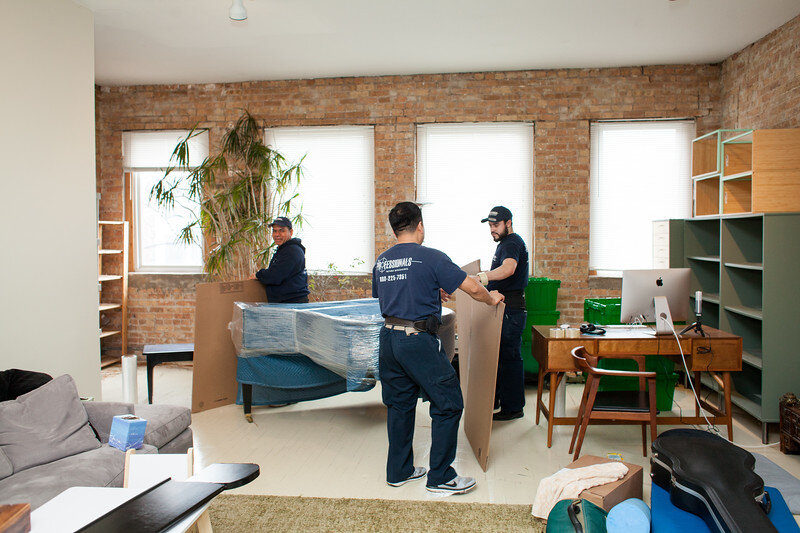Moving to a new home or office in Chicago can be both exciting and stressful. The process involves packing, loading, transporting, unloading, and unpacking your belongings. With so many tasks to manage, many people wonder if full-service moving is worth the extra cost compared to handling some parts of the move themselves. Understanding what full-service moving entails and the benefits it offers can help you make an informed decision for your Chicago relocation.
What is Full-Service Moving?
Full-service moving is a comprehensive moving option where a professional moving company takes care of nearly every aspect of your move. This includes packing your belongings with high-quality materials, carefully loading them onto the truck, transporting them to your new location, unloading, and unpacking everything into the designated rooms.
Some full-service movers also offer additional services such as disassembling and reassembling furniture, providing packing supplies, and even temporary storage solutions. Essentially, full-service moving is designed to minimize your workload and stress by entrusting the entire moving process to experienced professionals.
Benefits of Full-Service Moving for Chicago Relocations
Saves Time and Energy
Packing and moving can be incredibly time-consuming, especially if you have a large household or office. Full-service moving companies bring trained staff who work efficiently to pack your items securely and move them quickly. This saves you countless hours and physical effort, allowing you to focus on other important tasks related to your relocation.
Professional Packing and Handling
One of the biggest advantages of full-service moving is the expertise that movers bring to packing and handling your belongings. They use industry-grade packing materials and techniques to protect fragile items, electronics, and valuable possessions. Proper packing reduces the risk of damage during transit, giving you peace of mind.
Stress Reduction
Moving is often ranked as one of life’s most stressful events. Full-service moving alleviates much of this stress by managing logistics, heavy lifting, and transportation. Knowing that experienced professionals are handling your move can help you feel more relaxed and confident throughout the process.
Customized Services
Many full-service moving companies in Chicago offer customizable packages tailored to your needs and budget. Whether you want help with just packing or prefer a complete moving solution, you can choose services that fit your situation. This flexibility makes full-service moving accessible and convenient.
Insurance and Liability Coverage
Professional movers typically provide insurance coverage for your belongings during the move. This means that if any damage occurs, you have recourse to compensation. Handling a move yourself or with friends does not offer the same level of protection.
Is Full-Service Moving Worth the Extra Cost?
Full-service moving usually comes with a higher price tag compared to DIY moves or partial moving services. However, whether it is worth the extra cost depends on several factors:
Size and Complexity of the Move: Larger moves with many fragile or valuable items benefit more from professional packing and handling.
Time Constraints: If you have limited time to manage your move, full-service moving can save you valuable hours.
Physical Ability: Moving heavy furniture and boxes requires strength and endurance. If you are unable to do this yourself, professional movers are a safer choice.
Stress Levels: For many people, the reduced stress and peace of mind are worth the additional expense.
Experience and Confidence: If you lack experience in packing and moving, hiring professionals can prevent costly mistakes and damages.
For residents and businesses relocating in Chicago, full-service moving often proves to be a smart investment. The city’s busy streets, parking restrictions, and weather conditions can complicate moves. Professional movers are familiar with local regulations and logistics, ensuring a smoother process.
Choosing the Right Full-Service Moving Company in Chicago
To get the most value from full-service moving, it is important to choose a reputable company with a track record of reliability and customer satisfaction. Look for companies that offer transparent pricing, clear contracts, and comprehensive services. Reading reviews and asking for referrals can help you find trusted movers who will treat your belongings with care.
Full-service moving offers a convenient and professional way to handle your Chicago relocation from start to finish. While it comes at a higher cost, the benefits of saving time, reducing stress, and ensuring the safe transport of your belongings often justify the investment. Whether you are moving a family home or a commercial office, partnering with experienced full-service movers can make your move more efficient and less overwhelming.
If you are planning a move in Chicago and want a hassle-free experience, considering full-service moving is a wise choice that can provide peace of mind and excellent results.



